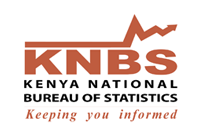 Kenya’s economy is estimated to have expanded by 4.3 per cent which was slightly slower than the growth of 4.4 per cent experienced during the same quarter of 2012.
Kenya’s economy is estimated to have expanded by 4.3 per cent which was slightly slower than the growth of 4.4 per cent experienced during the same quarter of 2012.
- The second quarter of 2013 was characterized by low inflation rate, which averaged at 4.37 per cent compared to an average of 11.78 per cent that prevailed during the second quarter of 2012. The ease in the inflationary pressure was mainly on account of lower food and fuel prices as well as a stronger shilling. The Kenya shilling strengthened against all its major trading currencies except the euro during the review period compared to the same period of 2012. The most notable gains being against the Japanese Yen and the South African Rand. A 100 Japanese Yen exchanged at an average of KSh 85.65 during the review quarter compared to KSh 100.73 in the second quarter of 2012.
- International oil prices declined during the quarter under review compared to the first quarter of 2013 but nevertheless remained relatively higher than the levels reached during the second quarter of 2012. Interest rates dropped significantly during the second quarter of 2013 compared to the same quarter of 2012. Inter-bank rates recorded the most drastic drop from 16.84 during the second quarter of 2012 to 7.41 in the quarter under review. Average Yield Rates 91 – day Treasury Bills averaged at 8.68 during the review quarter down from 12.43 recorded in the second quarter of 2012. Read More
